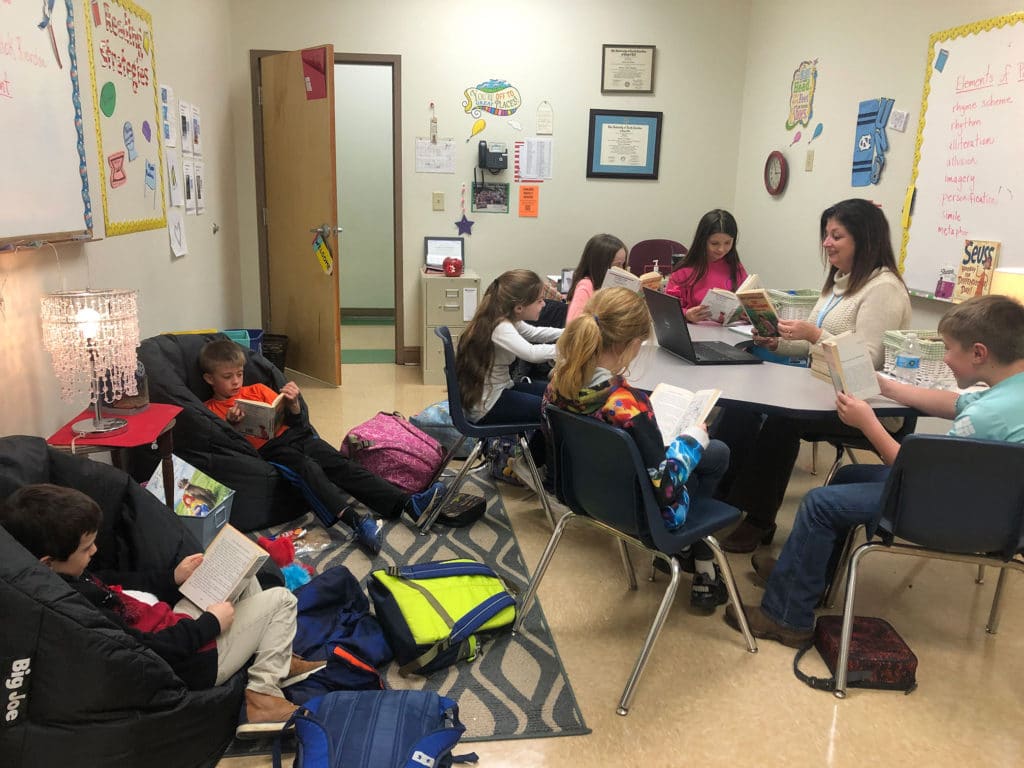Recently I have been participating in “Reading Interviews” with Clover Garden students of all ages, and I have enjoyed the conversations so much! Many of our younger guys – kindergarten through second grade – are a little nervous about reading and really fret when they come to a word they don’t know. But mostly they’re excited about the idea of learning to read! Our older elementary students, middle school “tweenagers,” and high school students can fall into one of several categories – the “I hate reading and only do it if the teacher makes me” group, the “I’m gonna have my face stuck in a book even while I’m supposed to be doing other things” group, and every group in between.

I start our conversations with what I call “Sharing our Reading Histories.” I ask students what they remember about learning to read; do they remember sitting with parents and grandparents to read? Do they remember a kindergarten or first-grade teacher who inspired them? Then I ask them if they read for pleasure now and if so, what genres do they like? What authors are their favorites? We then discuss their iReady assessment scores and NC Check-ins, and we look at their strengths and weaknesses.
One tip I share with students is that if they want to be better readers, they need to READ. Just like any other skill, reading gets better with practice. Every paragraph they read helps develop a vocabulary that enables students to comprehend better which, in turn, makes reading more enjoyable.
Here are some tips for parents to keep in mind:
- Almost every student who has positive memories of learning to read shares that their parents/grandparents read to them, took them to book stores, and took them to the library. Creating a culture of literacy in your home sets the tone for successful student readers.
- It’s important to provide reading materials for students that aren’t too difficult for them. It’s best if they read on their level and then progress gradually to more difficult material. If they struggle to read the text, they’ll get frustrated and maybe turned off to reading altogether.
- If you have a reluctant reader, make sure you’re providing reading materials that are of high interest to them. As I interviewed students, I found a range of interests from books on war to books on animals to science fiction to mystery. Every child is different, and my goal when we have our reading conversations is to be able to recommend books that will have them interested by the end of the first page!
- Book store displays can be really enticing to even our most reluctant readers. I took my granddaughter shopping with me last weekend because I needed a book myself. She left with three books of her own, and she’s not a big reader (she’s more of a champion Snapchatter.) But publishers are good at designing book covers that are intriguing, and sometimes a book or two will find its way into children’s hands when you least expect it.
- Many times students struggle with reading because they stumble over some words. Word games (word searches/crossword puzzles) and flashcards are helpful to build sight word knowledge. Also, just talking about words can help. Yesterday, two second graders stopped reading to me because they didn’t know the word “pioneer.” That opened up a big discussion about who the pioneers were and how they lived. A simple “word conversation” can build content knowledge as well.
- And last, if you have a gifted reader, make sure to provide reading materials that will enable your child to grow as a reader, too. Recently, I asked a student to return the book I lent her that was considered middle school level and then handed her Pride and Prejudice. Providing this student with a classic novel that offers more difficult language structure and diction, for example, will challenge the student and “stretch” her as a reader.
Ask your children what they’re reading, talk about words, engage in “book talks,” and provide plenty of reading materials. Be ready with a book when you hear those famous words of childhood (“I’m bored”). You’ll be cultivating a reader and a more successful student. (And you may just find a book you like yourself!)
If you are looking for tools to help grow your readers Scholastic and NCDPI have great tools available



